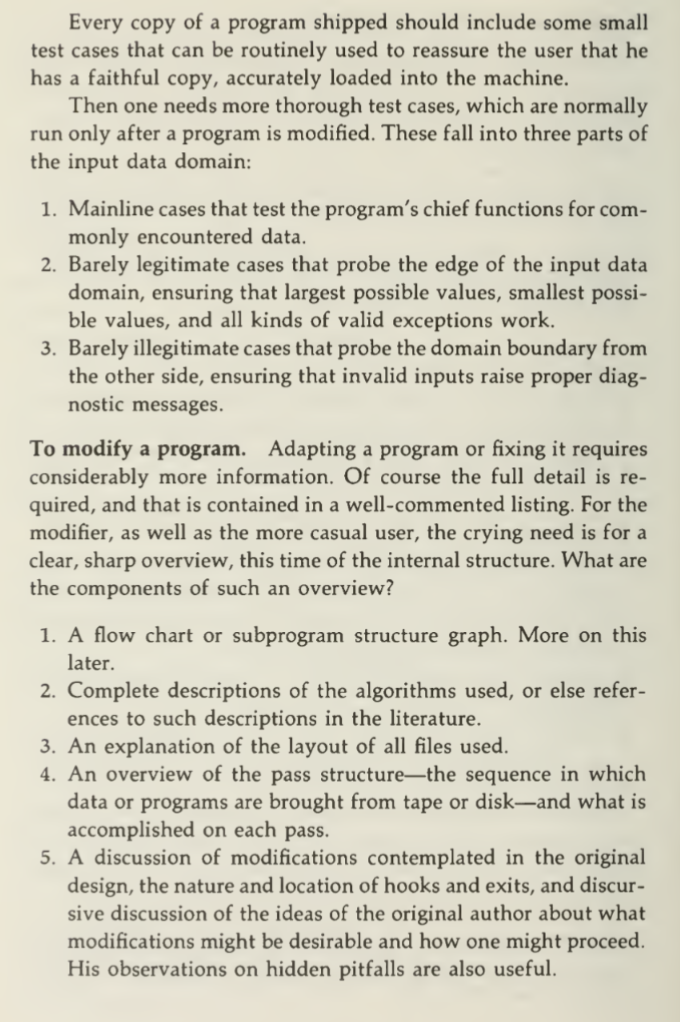What the documentation ought to cover. I read Mythical Man Month (the other essays in the book too) a few years back and was struck how clearly this is laid out there.
I'm not saying it is an amazing book*, but a lot of his (technical) observations from the 60s and 70s certainly still apply.
(*Warning: there's a small sprinkling of cringy social commentary in the book too)
(From https://web.eecs.umich.edu/~weimerw/2018-481/readings/mythical-man-month.pdf)

